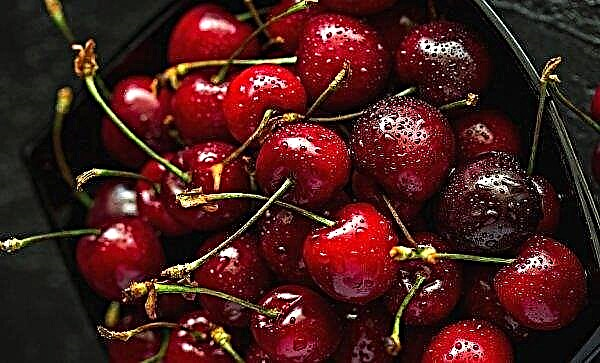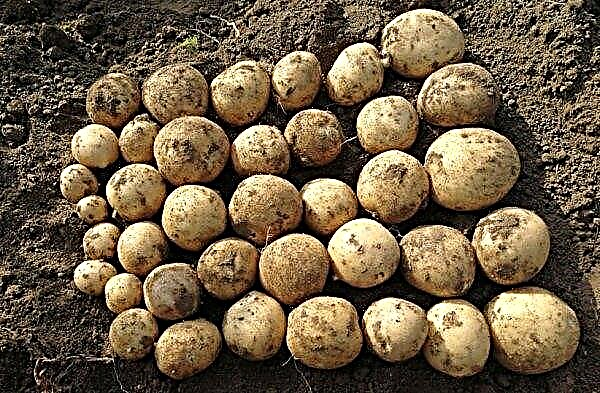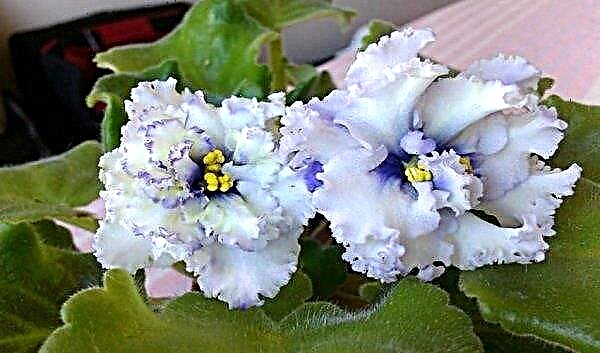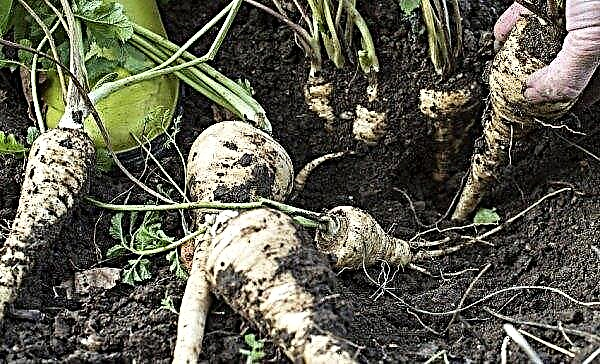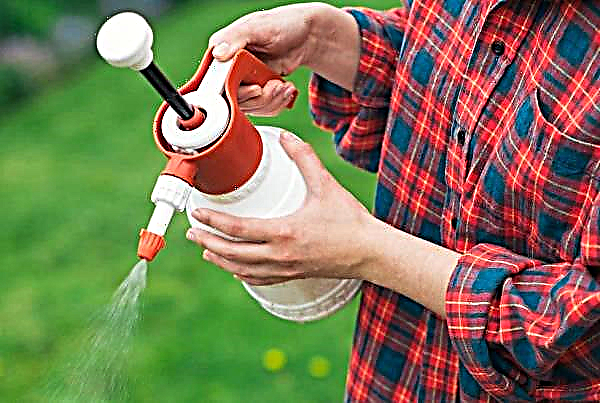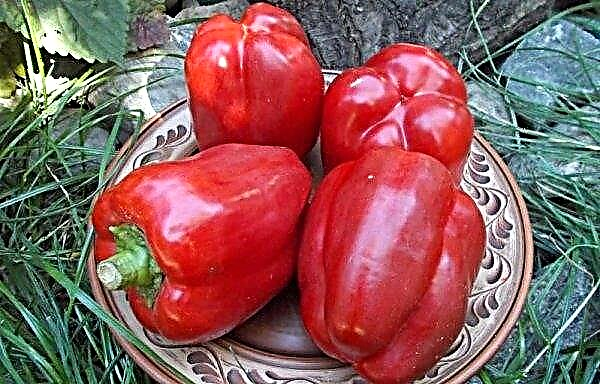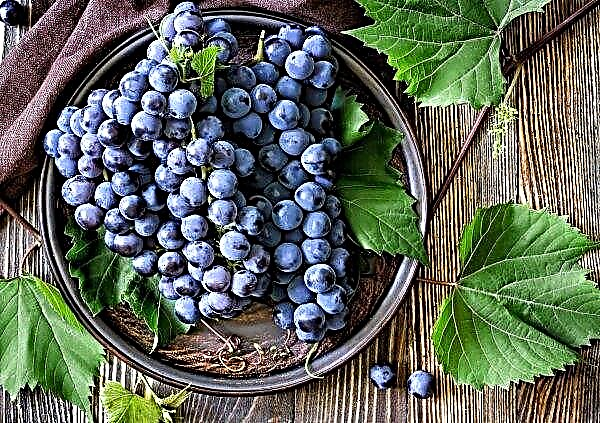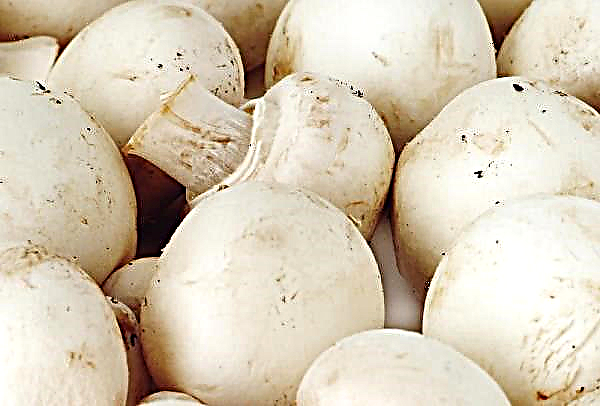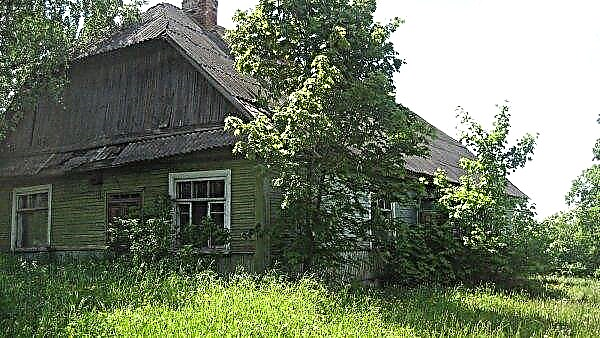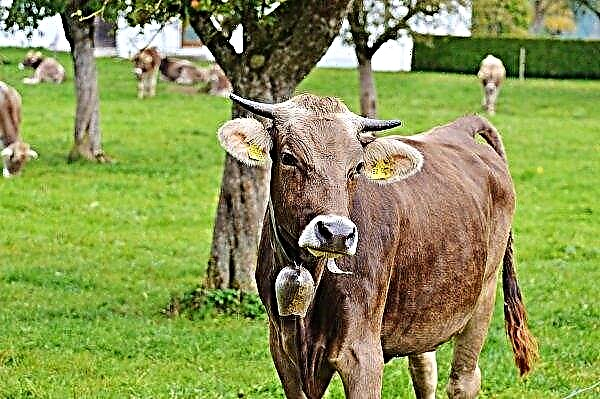Collecting large crops of quality cucumbers is the dream of any gardener. But sometimes ignorance of information regarding top dressing of vegetable crops, or improper use of fertilizers gives a negative result. All about the main signs of a lack of nutrients in cucumbers, types of fertilizing and their use - in the review below.
Signs of Nutrient Deficiency
The lack of trace elements in cucumbers is always accompanied by a change in the appearance of the plant.
Such features should know every gardener:
- with a lack of nitrogen cucumbers turn pale. Thinning of the stems gradually occurs, they become fibrous and solid. The plant loses its lower leaves, and the rest turns yellow. Yields are reduced, the ovary is small, in all fruits one end is very pointed;
- with a lack of magnesium yellow-brown spots appear on the leaf plates, similar to burns; shoots become fragile and grow poorly;
- with a lack of potassium a light border is formed on the leaves of the plant. Over time, darkening of the leaves occurs. The fruits take a rounded shape, taper at the peduncle, shoots wither sharply;
- if there is a lack of copper then leaves sharply turn pale. The ground part of the plant becomes weak and gradually fades, the ovary and flowers quickly crumble;
- little boron - cucumber dies growth point. The problem is also characterized by weakening shoots, which become sluggish over time; flowers crumble;
- with a lack of calcium brightened strips appear on the leaves of the plant, which expand over time, leading to fragility and wilting of leaf plates. Rot forms on inflorescences (with subsequent spread to fruits, stems and roots). The leaves become dome-shaped, in rare cases, claw-shaped;
- not enough phosphorus - the plant has dry spots on the leaves. There is a slowdown in the growth of the ground part, shedding of flowers and ovaries;
- with a lack of sulfur the leaf plate of the plant becomes rugged. The ground part sharply brightens / darkens;
- not enough manganese - bright spots appear on the leaves, which eventually absorb the entire sheet, and it dries out altogether;
- little iron - the upper part of the shoots of the cucumber is light, growth and flowering are slowed down.

What do cucumbers love
Before choosing top dressing for cucumbers, it is necessary to study information about the conditions that cucumbers need to provide so that they actively increase green mass and bear fruit well.
Did you know? In Ecuador, you can find a variety of cucumbers with giant fruits. Their size sometimes exceeds the size of zucchini. And in the UAE, square-shaped cucumbers were bred by breeders.
Culture needs to provide comfort, which is as follows:
- the soil should be high in humus, with a neutral or slightly acidic reaction, and with high moisture capacity;
- soil temperature - from +15 degrees at any time of the day;
- annual introduction of manure for digging (or infusion of fresh manure for each bush during the period of active growth of cucumbers);
- stable growing conditions, with air temperatures from +20 to +30 degrees during the day and high humidity.
In addition to the list of useful substances necessary for the growth and fruiting of cucumbers, there are irreplaceable trace elements that are the basis for the normal growth and development of plants.
For example, potassium makes it possible to nourish all parts of a plant with moisture, therefore feeding cucumbers with potash additives is mandatory (in the form of spraying leaves or applying root solution). Phosphorus additives are an indispensable element that provides a quality crop, as they directly affect the fruit setting process. Cucumbers need calcium top dressing to actively build up green mass, have an attractive appearance and the correct shape.
Phosphorus additives are an indispensable element that provides a quality crop, as they directly affect the fruit setting process. Cucumbers need calcium top dressing to actively build up green mass, have an attractive appearance and the correct shape.
Magnesium-based top dressing is necessary for the formation of a green pigment - chlorophyll.
Fertilizers for feeding cucumbers
There are several types of fertilizers. They differ in the nature of origin, composition and characteristics of use.
Mineral fertilizers
These are artificially created compounds, more economically viable than organics; they have a wide spectrum of action and a high speed of exposure to plants.
Did you know? The first experience in using mineral fertilizers was obtained thanks to the German chemist Justis Liebig in 1840. He put forward the theory of soil depletion after growing plants on it and the need to enrich the soil artificially.
The basis of such top dressing are metals and their compounds (in the form of salts, oxides, acids). Mineral fertilizers are simple and complex. Simple contains one main trace element, while complex ones combine several main components and have a complex effect. Mineral fertilizing is divided into 3 main groups: nitrogen, phosphorus and potassium, which, in turn, are also divided into subgroups. The composition and features of the use of top dressing depend on which subgroup the fertilizer belongs to.
Mineral fertilizing is divided into 3 main groups: nitrogen, phosphorus and potassium, which, in turn, are also divided into subgroups. The composition and features of the use of top dressing depend on which subgroup the fertilizer belongs to.
Nitrogen fertilizers are distinguished by good diffuse properties, are highly soluble in water, and can be used in the form of solid or liquid substances.
They are:
- ammonia (contain about 35% nitrogen). The application of such dressings can be practiced even in the snow, scattering granules on the territory that can melt the snow and soak into the ground;
- nitrate, which contain an average of 15% nitrogen. Top dressing is recommended for use on all types of soils, except for chernozem. Application is practiced in early spring, before plowing the soil, in order to achieve maximum nitrogen concentration in the soil before sowing. If the soil is light, then nitrate top dressing is applied to the soil in the spring, and autumn is applied on heavy soil;
- amide, a bright representative of which is urea containing 45% nitrogen. A prerequisite for applying fertilizer is its penetration into the soil, because, being on the surface, under the influence of air, the fertilizer turns into gaseous ammonia and evaporates, without having a positive effect on the soil and plants. It is allowed to use in greenhouses (in liquid form).
Potash fertilizers are presented:
- potassium chloride, the basis of fertilizer (50%) is potassium. Autumn and spring application before plowing is practiced;
- potassium saltwhere sodium and potassium chlorides are the base. Perhaps autumn and spring fertilizing for digging.
Phosphorus affects the flowering of plants, therefore, the timely introduction of phosphate fertilizers, which are presented:
- simple superphosphatecontaining 20% phosphoric anhydride. It can be used on any soil. If the soil is sufficiently moisture-absorbing, then application in solid form is practiced; if this indicator is low, then the fertilizer is applied in liquid form;
- double superphosphatewhich contains 19% phosphorus and 35% calcium. It is recommended to apply it when growing crops on acidic soil (for spring and autumn digging).
Organic fertilizer
Organic fertilizers are very popular, as they relate to natural sources of trace elements necessary for plants. Among the best organic fertilizers, the use of such types of organics is distinguished:
Among the best organic fertilizers, the use of such types of organics is distinguished:
- siderata - plants that are planted in areas where it is necessary to improve the composition of the soil. These are oats, white clover, field peas, rye. The essence of using green manure is to plant the above plants, wait for them to grow, and then plow the ground with them. In the spring, after similar processing, you can get rich in composition, fertile soil.
- vermicompost - universal nutrients that consist of waste earthworms. Thanks to this treatment, substances with a high content of nitrogen and potassium are formed. These fertilizers are recommended for use on clay and heavy soils.
- manure - the most popular organic fertilizer, the application of which is practiced in any period of plant growth. It is used in liquid form for plant nutrition or solid - for autumn digging.
- bird droppings - a very valuable fertilizer with a rich composition. It is used in the form of liquid top dressing to activate nutrients and trace elements. It is used directly for feeding plants under the root.
- bone mealcontaining a lot of nitrogen, phosphorus and calcium. Suitable for use in wetlands.
Folk dressing recipes
There are many folk recipes for cooking dressings for cucumbers, which are popular among gardeners. Below are the best.
Ash
This fertilizer is universal and contains phosphorus, potassium, nitrogen. The introduction of ash into the soil is practiced during the period of planting seeds or seedlings of cucumbers. At this time, 100 g of ash are added to each well, carefully mixing the fertilizer with the soil and pouring water. Subsequent times, cucumbers are fed with ash in 2 ways:
Subsequent times, cucumbers are fed with ash in 2 ways:
- Fertilizing under the root: 2 tbsp. l., top dressing is poured with cold water.
- Watering with a solution of top dressing under the root: dissolve 200 ml of ash in 1 liter of water, mix well. Water each plant with 200 ml of liquid.
Important! Feeding in the form of ash is recommended every two weeks.
Yeast
Fertilizer in the form of yeast is applied 3 times a season. To do this, prepare a solution. For 3 l of water, one pack (50 g) of yeast and 2/3 cup of sugar are usually used. All ingredients are thoroughly mixed in a glass jar and covered with a lid.
The container is placed in a warm place and insisted for 3 days, stirring occasionally. Use fertilizer as follows: one glass of the mixture is added to a bucket of water. Then, 500 g of liquid is poured under each bush, under the very root.
Onion peel
Fertilizer based on onion husks can not only saturate plants with useful substances, but also stimulate the immune system, protecting cucumbers from diseases.
To prepare the broth, use a handful of husks, which are boiled in 1.5 liters of water for 5 minutes. Allow to cool, then filter and dilute the resulting broth in 5 liters of water. The resulting liquid is sprayed with plants. You need to spray several times a week (early in the morning or late in the evening).
Zelenka and iodine
With a solution of greenery and iodine, plants are sprayed in order to saturate them with useful substances and protect against diseases and pests. Solutions are prepared separately, they are not mixed together, but you can process the plants, taking turns using either iodine or zelenka.
Everything is prepared very simply:
- To obtain a solution of brilliant green use 10 drops of the product per 10 liters of pure water. The water should be slightly warm, before cultivating the ground, irrigate first with clean water.
- To obtain a solution of iodine, 5 ml of the drug per 10 liters of water are used.
 Processing is carried out using a spray twice a month.
Processing is carried out using a spray twice a month.Important! If spraying with a solution of zelenka and iodine is planned, then each solution is used once a month.
Features of feeding cucumbers
Each growth period of cucumbers is characterized by changes in the appearance of the plant, so it is not difficult to understand what fertilizers to apply in a given period.
During flowering
During the period of active bud formation, fertilizers must be applied to increase the amount of nitrogen, potassium and phosphorus in the soil.
For this, special complex fertilizers are used, which consist of such components:
- Stimul-1 preparation (add in accordance with the instructions);
- any fertilizer with a high content of trace elements (nitrogen, potassium and phosphorus) - in the amount of 30 g per 10 liters of water;
- nitroammophoski (enough 20 g per bucket of water);
- infusion of fresh mullein (0.5 l).
The resulting mixture is watered each plant under the root (200 ml).
Also, during flowering, a good fertilizer for plants is a solution of yeast. Pour the prepared solution (0.5 l) under the root.
During fruit setting
When the first greenbacks begin to tie, they use any fertilizer with a high content of nitrogen and phosphorus. The ratio of nitrogen to phosphorus should be 80% to 20% (diluted with water in accordance with the instructions on the package).
Plants are watered or sprayed with a self-prepared fertilizer-based solution. Pour 0.5 liters under each bush, previously irrigating the ground with water. To make the cucumbers plump, the mixture, already more diluted (3-4 times the volume indicated in the instructions), is used for spraying.
Processing is carried out in the early morning or late evening once a week.
During fruiting
When the first greens begin to ripen, it is necessary to feed the plants for the third time. To do this, use potassium-nitrogen fertilizers, adding organic matter.
To prepare the nutrient mixture use:
- infusion of green grass - 1 l;
- wood ash - 1 cup per 10 liters of water;
- potassium nitrate - 30 g per 10 liters of water.
With the prepared mixture, it is necessary to water each bush under the root in an amount of 0.5 l (2 times a week).
What and how to feed cucumbers in a greenhouse?
If cucumbers grow well during greenhouse cultivation, and no deviations are noticed, then the introduction of the first top dressing during the flowering period can be omitted. If the growth is slow, the weakening or wilting of the shoots is noticeable, it is recommended to apply fertilizer already during the flowering period.
To do this, use complex nitrogen-containing mineral fertilizers (ammofoska or azofoska), alternating it with organic matter: 50 g of mineral fertilizer or 1 liter of liquid manure per 10 liters of water.
The second top dressing is required during the fruiting period. The need for fertilizer in this period is associated with an active increase in the mass of fruits. At this time, all the beneficial substances from the roots go to greenery, and so that the plant suffers, and then continues to bear fruit, it is necessary to add an additional portion of fertilizer.
The practice of applying potash and phosphate fertilizers, as well as nitrogen fertilizers with a high sulfur content.
The second feeding is carried out in two stages:
- The appearance of the first ripened fruits. As fertilizer make a solution of nitrophosphate: 1 tbsp. l on 1 bucket of water.
- The introduction of root dressing of organic fertilizer to 10 liters of water, using 0.5 liters of mullein and 1 teaspoon of potassium sulfate. Organics are introduced a week after mineral top dressing.

Additional tips for increasing yields
To increase the yield, it is recommended to follow the general tips for growing cucumbers:
- It is necessary to plant a crop in open ground when at night the temperature does not fall below +15 degrees.
- For planting plants use fertile, but quite loose soil.
- The northern edge of the beds where cucumbers are grown is sown with corn or sunflower to form a crop protection from drafts and cold winds.
- It is better to plant cucumbers in the territory where cabbage, legumes, onions, and garlic used to grow.
- It is necessary to observe the planting pattern (depending on the variety of cucumbers), following the recommendations on the package.
- If there is a problem with a lack of insects during the flowering period of cucumbers, artificial pollination can be carried out.
- It is necessary to observe correct and regular watering, as cucumbers are very fond of water. It is watered exclusively with warm water every day or every other day, depending on the amount of precipitation.
- They resort to mulching the soil, which retains moisture in the soil for a long time and makes it breathable.
- After irrigation, the soil is loosened to avoid crusting on the surface, which prevents air from entering the root system.
- They recommend timely harvesting to stimulate the ovaries and the rapid maturation of new greenhouses.
Did you know? Cucumbers come from the Himalayas. At the foot of the mountains, cucumbers still grow wildly.
Thus, top dressing allows you to stimulate all the processes of cucumber plant development and the formation of ovaries. To get the maximum effect from top dressing, you must follow the recommendations for the application and alternate mineral fertilizers with organic matter.

